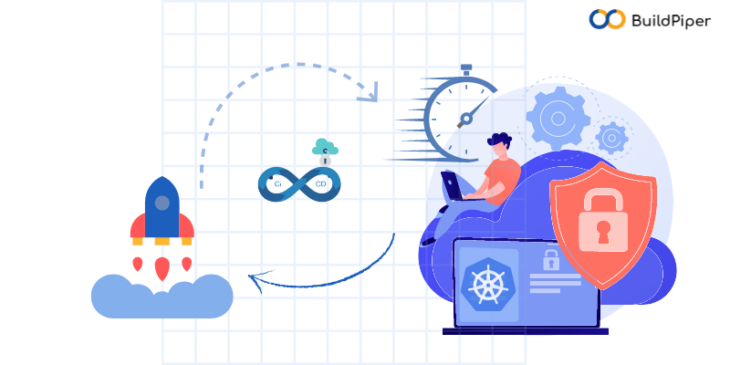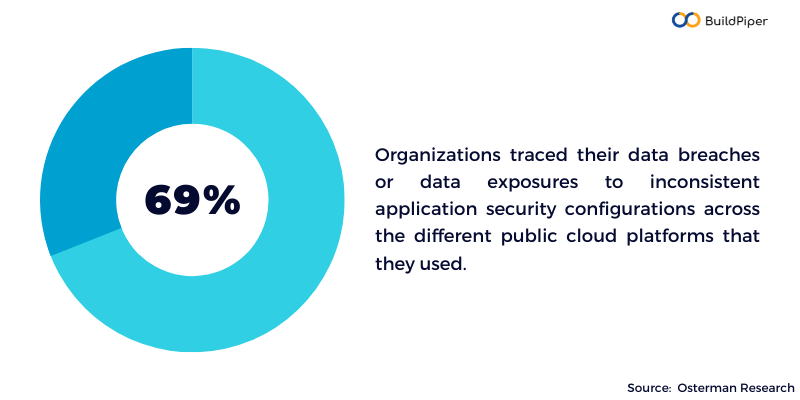
Table of contents
One of the commonly noticed challenges with companies adopting cloud-native architectures and container-driven development journey is that they are not clear about why they’re choosing the path. Now, this might surprise you because organizations are investing a lot of time and money in making these a reality. The truth is that cloud-native architecture is a vast spectrum, and it means different things to different people. For some, it might seem like a path to reducing costs, it may even mean scalability, accessibility, etc.
Why is Cloud-native Security Important?
Any complication in the cloud can have a cascade effect across an enterprise, which leaves cloud-native apps in development at high risk. There is a range of concerns spread out by security professionals when it comes to cloud-native security. Such as:
- Low visibility of cloud assets
- Trouble with prioritizing risk
- Insecure APIs and misconfigurations
- Lack of expertise/skill gap
The Disruptions Caused by Cloud-Native Architectures!
The enticing promise of the cloud-native application architecture – for scale, resilience, and renewed business agility has lured many organizations. With time businesses have also happened to adopt it, by shifting and lifting their entire infrastructure on to cloud; and calling it Cloud-native architecture. What they failed to realize is that it’s not exactly the end of their worries.
The modularity offered by the cloud-native application architecture has simplified the independent manageability of services. But having larger and decentralized cloud-native architecture has increased the threat landscape.
To get started with “cloud-native security,” we need to realize that traditional approaches of perimeter-based security and security constructs are no longer applicable to this new domain.
How is Cloud-native Security better than Traditional Enterprise Security?
Cloud Native Security v/s Traditional Enterprise Security
| Cloud Native Security | Traditional Enterprise Security |
Automated
|
Monitored and Instrumented
|
Proactive
|
Reactive
|
| Patches applied via clean-slate redeployment.
Instead of patching the old systems, new clean images are used to automate the deployment. |
Security Patches are added incrementally
Patches are applied to the old system in stages to eliminate the problem. |
Top 5 Cloud-native Security Challenges
Modern-day cloud-native architectures are made up of multiple layers that include applications, container orchestrators, and infrastructure.
Dissecting the above layers:
- An application comprises small independent containers that are portable and run with many instances.
- Container orchestrators, like Kubernetes (widely used), manage these containers and distribute them over the infrastructure.
- The infrastructure layer consists of nodes, networks, and storage from cloud providers.
Each layer of the cloud-native architecture forms a novel attack surface for threats. The top 5 potential challenges with cloud-native architectures are –
Misconfiguration and Exposures
Cloud-native architectures are highly configurable with a broad range of options. A single wrong configuration can wipe out the existence of an application (simply, delete). Just like setting the wrong network policy can expose sensitive database instances to external systems. It is crucial to forming guardrails for misconfigurations.
Unclear Security Perimeters
Cloud-native application architecture is built upon an interdependent stack of multiple components. Typically that includes cloud services, virtual nodes in the data centers, and networks simultaneously. Here, defining a security perimeter is not easy, in order to secure we need to conceptualize a well-defined architecture and bake in the security concept before running them on the cloud.
Container Security
Containers are small packaged units consisting of operating systems, application executables, and dependencies. They expose a huge area to threats and can become a habitat of vulnerabilities if preventive measures are not followed. To prevent this, we need to follow the best practices to scan every container image. To get a better understanding refer to this blog – Securing your Containers- Top 3 Challenges!.
Runtime Security
Securing cloud services and scanning container images is fine, we also need to focus on the runtime phase. It is vital to ensure that these applications in the runtime phase do not expose data while they run and have limited access to external systems.
Observability
The prime reason for choosing cloud-native architecture is flexibility and scalability.
It is challenging to establish a holistic monitoring and observability approach in distributed systems, and it’s also one of the most critical requirements. In its absence, it’s nearly impossible to know the exact status of applications, Kubernetes clusters, nodes, and infrastructure.
5 Cloud-Native Security Strategies Helping in Application Delivery!
Following a Shared Responsibility Model with Security
Cloud-native security requires developers and security specialists to work together throughout the process – from software development to deployment. Although both teams are unaware of the skills of each other, they still bring the better parts together.
Security professionals can secure the tools and processes used to develop, test, and deploy applications. In return, the Dev team can learn secure coding practices to apply security measures early in the software development process.
Also, we can achieve this with the use of a DevOps platform, supporting us with a custom CI/CD pipeline that automatically analyzes:
- Code Quality
- Unit Testing
- Code Coverage
- Code Security
Also helpful, is if we implement conditional execution of pipeline using conditions of success or failure of previous jobs.
Organizations need to Shift Left Security
Shifting security left is more like a cultural shift which obviously requires more advanced tools to handle the scale and velocity of the cloud-native application development environment. If we shift security left, we are introducing security early in the SDLC, for instance, vulnerability scans.
A good way to protect your infrastructure is by avoiding serverless features. Vulnerabilities in serverless function code and containers give an easy to sensitive data, escalate privileges, certificates, etc to hackers. If we consider using a secret management tool like HashiCorp vault, by integrating it with the CI/CD pipelines, we can safeguard confidential data.
Securing Dependencies
Many times application code contains open-source dependencies in repositories like Python Package Index (PyPI). In this case, we need proactive automated scanning tools that leverage comprehensive vulnerability databases.
A managed DevSecOps platform can support us in maintaining security during development by triggering application security actions. It also prevents the introduction of any vulnerable dependency packages into containers and serverless functions that are running in your production environment. Adopting the “Convention over Configuration” approach with Public and Private Ingresses.
Multi-layered Security
In a multi-layered security approach, we use network monitoring tools to detect and remediate individual threats. Here, the security teams continuously monitor all the layers of the network. It is helpful in not just preventing breaches but also to come up with contingency plans in case of successful breaches.
Cloud-Agnostic Security
Different cloud providers have different use cases. Going for a cloud-agnostic security approach helps in monitoring multi-cloud models. Forming a single security strategy that is a mix of the best practices that multiple cloud providers must follow. This further simplifies cloud-native monitoring, disaster recovery, and compliance efforts.
Wrapping Up…
Today organizations realize the importance of security right from the development stage instead of keeping it in Q&A in the software development life cycle. There’s no agility, if critical parts like security is left at the end of the cycle. With collaborative efforts from developers and security experts, we can expect faster application delivery.




